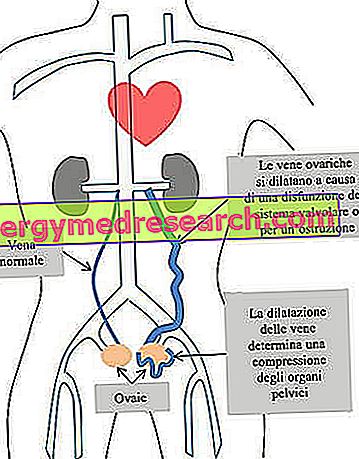Symptoms
Nickel allergy is the most common cause of allergic contact dermatitis, a disease that produces skin lesions very similar to those of eczema: at first blisters form on the surface of the skin, which appears red, itchy, swollen and covered with vesicles, which can break forming crusts; subsequently, if the contact with nickel persists over time, the skin thickens and peels, cracking and assuming a darker color.

Most likely this man does not suffer from nickel allergy ...
In this sense, only the parts of the body exposed directly to the allergen are affected and it is precisely for this reason that we speak of allergic contact dermatitis (although sometimes these symptoms can also occur in other body regions).
Over time, the typical manifestations of nickel allergy can become very uncomfortable and painful. However, their intensity within the population considered allergic (the statistics speak of an incidence of around 10%) is variable according to the degree of nickel allergy.
Why does it appear?
Also based on genetic factors - which justify a certain degree of familiarity with the disease - the immune system of allergic individuals reacts to nickel, triggering a more or less severe reaction. The metal is in fact recognized as something foreign, like a splinter or a pathogenic microorganism, and as such it is attacked by an inflammatory reaction characterized by the strong release of histamine by the mast cells. This substance increases the permeability of the small blood vessels of the affected area, favoring the accumulation of liquids (vesicles), white blood cells and other substances deputed to confinement and destruction of the damaging agent; in addition, histamine produces a strong local itch.
Normally, after coming into contact with the skin of allergic people, nickel causes a rash within 12/48 hours, after which it may take from two to four weeks before the vent is completely resolved.
A predisposing factor is undoubtedly sweating, which amplifies and accelerates the individual's allergic response. The same applies to those who - for example for a particular work activity - expose the areas in contact with nickel to water and humidity.
As anticipated, relatives of relatives suffering from the same problem are also at risk of developing an allergy.
Where is the nickel?
Nickel in the Objects
Nickel is a heavy metal typically found in some jewels, in zippers and in jeans buttons. In non-allergic persons, contact with nickel does not cause any problems, but about 10% of the population develops an allergic reaction characterized by the symptoms described above. The main offenders in this regard are earrings, rings, necklaces, straps, spectacle frames, bracelets and body-piercing jewelry; nickel is in fact commonly found in many metal products, including gold jewelery and various alloys, contained, for example, in coins, keys, screwdrivers, buckles, hooks for bra, etc.
Nickel in food
Nickel, however, is not only found in clothes and jewelry, but also in the foods we eat every day. In people with a more severe allergy, even the normal diet can trigger an unwanted allergic reaction. Unfortunately it is not possible to indicate the nickel content of foods, since this parameter is strongly influenced by the soil in which they were cultivated (vegetables), by the pesticides used and by the equipment and substances used during the various steps of the production chain.
If the diet gives problems in this sense (which only affects a small percentage of people at risk), the doctor prescribes an exclusion diet, also recommending the use of cutlery, pans and other non-metallic kitchen utensils.
Foods normally excluded include chocolate, cocoa, dried fruit, legumes, tea, spinach, mushrooms, vegetable margarine, herring and oysters.
To learn more, read: Nickel in food »
Diagnosis and Treatment
See also: Drugs for the treatment of nickel allergy
The diagnosis of nickel allergy depends on the characteristics of the skin lesions and on the recent contact with a possible object containing the metal. In doubtful cases, however, it is possible to resort to the so-called patch test: on the upper part of the patient's back small patches containing the suspected allergenic substances are applied, after which at a distance of 48-72 hours the local skin reaction is evaluated; if the removal of the nickel-containing patch leaves a spot of inflamed skin underneath, the diagnosis of a nickel allergy is positive. We recall that in this regard, so small amounts of allergens are used as to be risk-free even in cases of high sensitivity to the substance.
Nickel allergy, being a reaction of the immune system, is not curable. The best weapon is prevention, obviously based on avoiding contact with objects containing metal. In the event of a particularly violent reaction, it is still possible to take medicines that can alleviate the symptoms and accelerate their resolution; in this regard, the doctor can prescribe creams for topical use based on corticosteroids or tablets containing antihistamines to the subject with nickel allergy.



